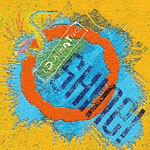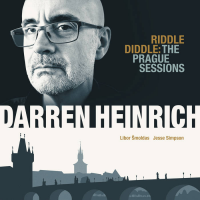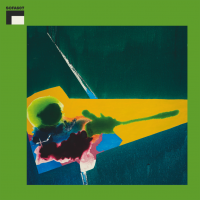Home » Jazz Articles » Album Review » Ronnie Boykins: The Will Come, Is Now
Ronnie Boykins: The Will Come, Is Now
Boykins is both leader and composer on this record. The titles even reflect the poetic, universal consciousness that is indigenous to the Sun Ra mindset. Boykins' seven-piece band holds tight to the music's tunefulness and centered character, even though some of the instruments might follow their lines loosely. Five members of the group play horns; they project themselves directly, often in unison ("The Will Come, Is Now," "Demon's Dance"), and melodically, with due ornamentation. Each horn has its place to shine ("Dawn Is Evening, Afternoon").
The bass assumes the position of conductor, as the hub from whence the instruments pursue their own tangents, or to which the instruments conjoin. In fact, in this recording, the bass sits right up front, close enough to touch, while the remaining instruments are at a slight distance.
Responsible for establishing the bass as a solo instrument (with importance equal to a sax, for instance) rather than simply as part of a rhythm section, here Boykins shows his ability to present a musical idea ("Starlight At the Wonder Inn," "Dawn Is Evening, Afternoon") and, because his band mates listen to one another, allow that idea to jettison into unexpected places. The repeated phrase is a key to Boykins' signature. The lone bass ostinato carries the ensemble ("The Will Come, Is Now," "Dawn Is Evening, Afternoon," "Tipping On Heels"); the instruments spring from the repetitions, actually reiterating phrases themselves or taking a completely different route out of or back into the original phrasing ("Demons' Dance," "Dawn Is Evening, Afternoon," "Tipping On Heels").
Boykins plays the sousaphone on "The Third I," with the rattles, chimes, tambourine, cowbells, drumming devices, and congas providing a channel for and surrounding a lively progression into solo flute work and a soprano sax song of arpeggios. At the end of this final cut, the bass intrudes into the full-blown African atmospheric portrait that has been painted and locks into a repeated phrase to pull the entire ensemble into unity, each instrument strong and identifiable—the re-assertion of the nature of the band.
Boykins is right on the money on The Will Come, Is Now—the rendering of thematic material, the choice of players, and the sound that the band produces, which bounces, bends, and looms large just like an orchestra. This music has all the markings and chutzpah, possessed by music of the mid-twentieth century era, to secure an indelible place in history. How the musicians play and how the music sounds is beyond criticism, the very quality of which greatly influenced improvisation then and now.
Track Listing
The Will Come, Is Now; Starlight At The Wonder Inn; Demon's Dance; Dawn Is Evening, Afternoon; Tipping On Heels; The Third I.
Personnel
Ronnie Boykins
bass, acousticRonnie Boykins: bass and sousaphone; Joe Ferguson: soprano and tenor saxophones, flute; Monty Walters: alto and soprano saxophones; James Vass: alto and soprano saxophones, flute; Daoud Haroom: trombone; Art Lewis: percussion; George Avaloz: congas.
Album information
Title: The Will Come, Is Now | Year Released: 2009 | Record Label: ESP Disk
Tags
PREVIOUS / NEXT
Support All About Jazz
 All About Jazz has been a pillar of jazz since 1995, championing it as an art form and, more importantly, supporting the musicians who make it. Our enduring commitment has made "AAJ" one of the most culturally important websites of its kind, read by hundreds of thousands of fans, musicians and industry figures every month.
All About Jazz has been a pillar of jazz since 1995, championing it as an art form and, more importantly, supporting the musicians who make it. Our enduring commitment has made "AAJ" one of the most culturally important websites of its kind, read by hundreds of thousands of fans, musicians and industry figures every month.


















